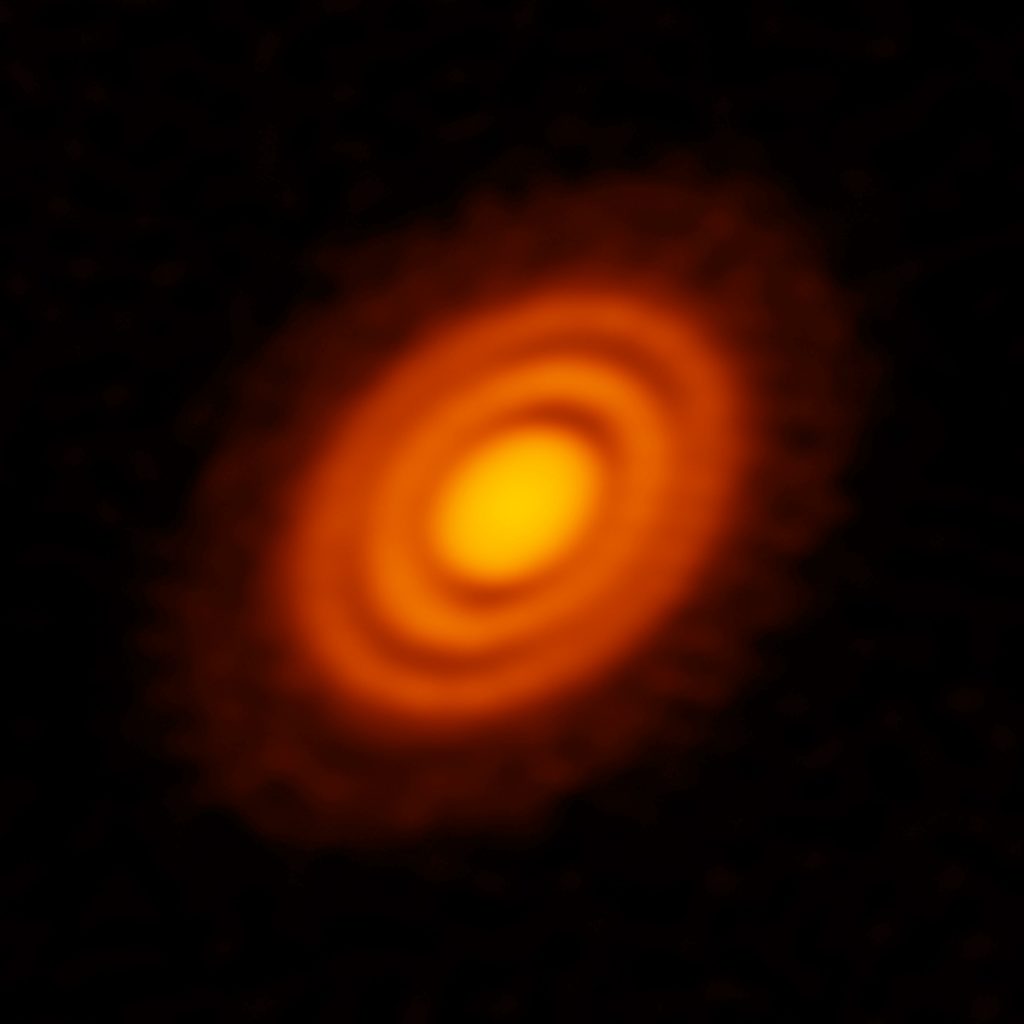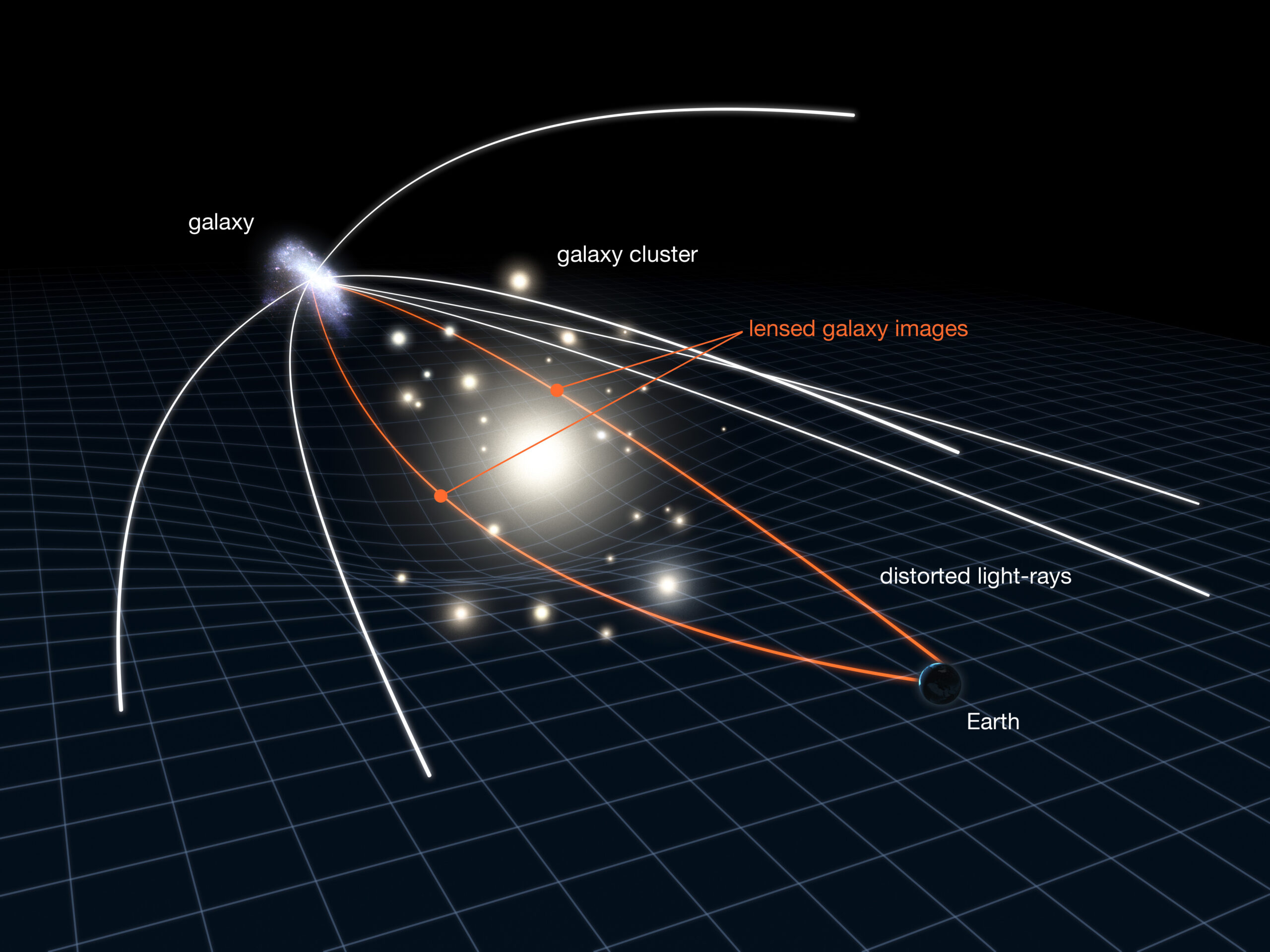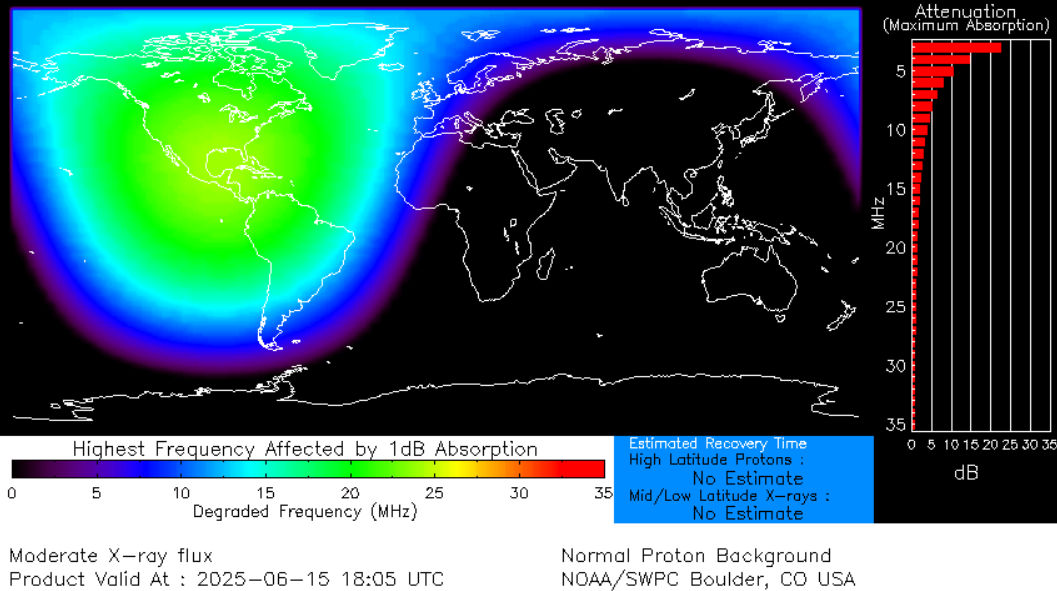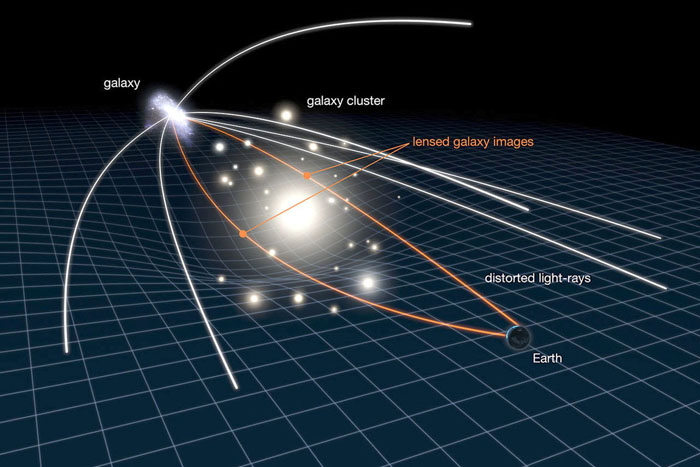Infant planets are ravenous little blighters that quickly devour what remains of the star-circling gas and dust clouds in which they form. The gas in these protoplanetary disks disappears rapidly, within just a few million years. Astronomers now have a better picture of this process of planetary evolution than ever before, thanks to a new study. The research was conducted by an international team of astronomers using the Atacama Large Millimeter/submillimeter Array (ALMA), as part of a program called the ALMA Survey of Gas Evolution of PROtoplanetary Disks (AGE-PRO). The…
Read MoreTag: Astronomy
Roman Space Telescope will use a century-old idea from Einstein to probe the nature of mysterious dark matter
When NASA’s Nancy Grace Roman Space Telescope begins science operations in 2027, it will use a space-bending effect first predicted by Einstein back in 1916 in an attempt to crack one of science’s greatest mysteries: the nature of dark matter. The phenomenon in question is that of “gravitational lensing.” The great physicist’s magnum opus theory of gravity, general relativity, proposes that this occurs when objects of great mass warp the very fabric of space-time (the four-dimensional unification of space and time), and light from background sources is curved as it…
Read MorePowerful solar flare erupts from sun triggering radio blackouts across North America (video)
An Earth-facing sunspot has turned into a prolific flare factory, firing off multiple powerful M-class solar flares in less than 24 hours, along with several minor C-class eruptions. The most intense of these solar flares erupted on June 15, peaking at 2:25 p.m. EDT (1825 GMT) and registering as an M8.46-class — just shy of the X-class category, the most powerful type of solar flare. This eruption also unleashed a coronal mass ejection (CME) — a massive plume of solar plasma and magnetic field — now partially headed toward Earth.…
Read MoreDark matter ‘lampshades’ dimming stars could solve one of the greatest scientific mysteries
Dark matter clumps could act as stellar lampshades, drifting between Earth and distant stars, dimming them by an almost imperceptible amount, a new study suggests. If this idea is correct, such “dark matter lampshades” could help solve the mystery of what dark matter is made of. This is a huge problem in science because, despite making up around 85% of the matter in the cosmos, no one knows what dark matter actually is. The team’s research mainly focuses on one particular candidate for dark matter: massive astrophysical compact halo objects,…
Read MoreNew model helps to figure out which distant planets may host life
This article was originally published at The Conversation. The publication contributed the article to Space.com’s Expert Voices: Op-Ed & Insights. The search for life beyond Earth is a key driver of modern astronomy and planetary science. The U.S. is building multiple major telescopes and planetary probes to advance this search. However, the signs of life – called biosignatures – that scientists may find will likely be difficult to interpret. Figuring out where exactly to look also remains challenging. I am an astrophysicist and astrobiologist with over 20 years of experience…
Read MoreGo inside the development of NASA’s $10 billion James Webb Space Telescope with new ‘Cosmic Dawn’ documentary
For space fans, June has something extra to enjoy, as NASA recently released “Cosmic Dawn,” a new “intimate access” documentary all about designing and assembling the James Webb Space Telescope. The 90-minute film provides special, never-before-seen footage from the Webb film crew as they invite viewers behind the curtains of one of the most ambitious scientific endeavors in history. “At NASA, we’re thrilled to share the untold story of our James Webb Space Telescope in our new film ‘Cosmic Dawn,’ celebrating not just the discoveries, but the extraordinary people who…
Read MoreAstronomers discover ultrapowerful black hole jet as bright as 10 trillion suns lit by Big Bang’s afterglow
Astronomers have discovered extraordinarily powerful X-ray jets blasting from two supermassive black holes that are so ancient that the jets shine in the afterglow of the Big Bang. “They are transforming the first light of the universe into high-energy jets,” Jaya Maithil, a postdoctoral research fellow at the Harvard and Smithsonian Center for Astrophysics, told reporters Monday (June 9) at the 246th meeting of the American Astronomical Society in Anchorage, Alaska. Using data from NASA’s Chandra X-Ray Observatory and the Karl G. Jansky Very Large Array (VLA), Maithil and her…
Read MoreProposed NASA radio probe could use gravity ‘lumpiness’ to reveal the insides of alien worlds
Engineers have designed a compact, battery-powered radio probe that could help unlock the secrets of alien planets. The proposed small probe, known as the Gravity Imaging Radio Observer (GIRO), would use gravity fields to precisely map the interiors and compositions of exoplanets and other celestial bodies. “GIRO is a small radio probe that reflects radio signals sent from the host spacecraft that carried and released it,” Ryan Park, principal engineer at NASA and supervisor of the Solar System Dynamics group at the Jet Propulsion Laboratory, told Space.com in an email.…
Read MoreNASA robot digs up simulated moon rocks | Space photo of the day for June 13, 2025
NASA continues to test various robotic models in a simulated lunar surface as it works toward the goal of having humans back on the moon. What is it? The RASSOR (Regolith Advanced Surface Systems Operations Robot) is a remotely operated mobile robot designed to excavate rocks and dust from the moon. In its latest test, the RASSOR creates a three-foot long berm in the simulated lunar dust. Where is it? NASA tested its latest RASSOR at the Granular Mechanics and Regolith Operations Lab at the Kennedy Space Center in Florida…
Read MoreAn entrepreneur wants to build a giant net to catch spacecraft landing on the moon, but can it be done?
Greece-based entrepreneur has a unique idea for moon-bound deliveries: using a giant net to catch packages launched from lunar orbit. Although there are still many hurdles to clear, the system would address many of the key challenges for moon-bound deliveries and could aid in the future mining of lunar resources. Right now, lunar landers are costly, especially when they fail. Rather than using landers for deliveries to the moon’s surface, Charis Kosmas has developed a concept called the Momentum Absorption Catcher for Express Deliveries on Non-Atmospheric Somata (MACEDONAS). It works…
Read More








